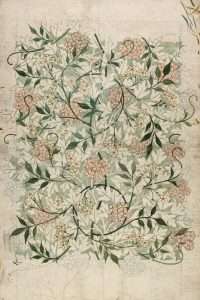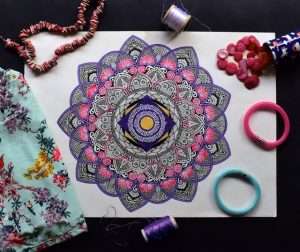Line art is a style of art that uses lines and their relationships, rather than colors or shades, to create images. This is a very effective style in illustrating concepts because it leaves room for the viewers imagination to interpret the image.
In this essay, I will explain the history of line art, its definition and its uses.
A Brief History of Line Art
-Line art dates back to ancient times with early Egyptian hieroglyphs. They would use lines to illustrate different objects as a way of relaying messages or religious symbols. In fact, line art was used as a form of communication long before writing was even thought of and has been used by cultures around the world.
Cave drawings were some of the first drawings made using line art techniques. Examples can be seen on cave walls in France from approximately 15,000 to 10,000 BC. The drawings were simple stick figures that showed hunters in action against deer or bison. These drawings meant something to another person who saw them but they didn’t mean much to us today because they don’t have much detail. It wasn’t until graffiti appeared that we started seeing more complex forms of line art. Graffiti artists would tag walls with pictures and words made up of lines and curves that often had meaning to
Line art is a form of illustration that uses lines, typically solid black lines, to create the picture. Line art is also known as line drawing and black-and-white artwork. It is a popular technique in technical fields, such as engineering drawings and schematics, because it can clearly depict complex objects and ideas.
Tighter control over the linework allows for more precision in depicting details, which makes line art ideal for rendering architectural blueprints or mechanical diagrams. Technical drawings are usually line art because they are meant to provide detailed information about an object.
Line art is also a popular tool for cartoonists to use when creating illustrated stories. Using line art gives a cartoonist the ability to tell a story without having to worry about color. This makes it easier for illustrators to concentrate on the plot of their story and convey emotions through facial expressions and poses.
There are many different ways to create illustrations, but the most common way is to use line art. Lines can be any number of things, such as pencil or ink drawn lines, but most often they are lines created on a computer by the user. In this form they are usually referred to as vector graphics, although they are sometimes referred to as bitmap graphics.
Tutorials for drawing line art exist all over the Internet, but many of them do not explain why some aspects of drawing these illustrations look the way that they do or why certain pieces of equipment should be used for certain purposes. If you are not an artist yourself, you may find it difficult to decide what software or hardware to use without knowing exactly what your finished product is going to look like and how you intend on using it. This tutorial will tell you about what line art is and how it is used so that you can decide how best to utilize it for your needs.
– What is Line Art?
Line art is an image made up of lines. They may be solid black lines, dashed lines, dotted lines or even invisible lines that only show up when superimposed over another piece of artwork, but they will always be one continuous line. The purpose of these types of illustrations vary depending on
Line art is a drawing style that uses solid lines to create the impression of form and texture. Some of the best line art is as beautiful as any other form of art, though it is not usually considered fine art because it does not use shading or color, only a limited color palette or no color at all.
T-Bone Slim, an American blues musician, is known for his line art album covers. His most famous album cover shows a man standing on a ridge in front of a background of trees with the sun setting behind him.
The comic series Lobo by Keith Giffen and Simon Bisley featured artwork that was entirely line art. The artist used this style to allow him to draw many different aliens without having to design new costumes for each one.
Line art drawings are defined by the use of continuous lines without gaps or breaks. These lines can be bold and thick or thin, depending on the artist’s preference. Artwork that uses thick lines is sometimes called “bold line” while artwork using thin lines can be referred to as “fine line.”
While some artists have become well known for their work in line art, others have become known for their work in other styles, such as coloring and shading. Al Hirschfeld was one example of
Line art is a style of drawing that uses lines and only lines. There are many varieties of line art, including cross-hatching, stippling and hachure, but the most common form is line art made with a single stroke of a pen or brush. Line art is sometimes combined with other media, for example in Japanese ink wash paintings, but it is not just a matter of combining media: the effect is different. Line art has a different feel from painting or illustration. The main difference is that while illustrations are often made to be as realistic as possible (even if they use non-realistic colours or proportions), line art is usually deliberately stylised. This means that the proportions and body parts in line art are often different from what you would see in reality. In many cases you can’t even tell whether the subjects in the picture are people or animals or something else.
This style has been used by artists since prehistoric times. Cave paintings are probably the best known examples of line art, but there are also many examples from later periods and cultures. For example, the Bayeux Tapestry is mostly line art – although it was embroidered rather than drawn. Line art also has a long tradition in Chinese paintings and Japanese prints.
One
Line art is the simplest form of graphic design and it is a very popular method for many artists. Line art is sometimes referred to as black and white drawing because there are no shades of gray. This type of art is printed on newsprint or other papers and has been used by newspapers and magazines as well as books and greeting cards. Line art can be drawn or painted with pencils and markers, or even paints to create a wide variety of visual effects.
Line art is a very simple medium. It doesn’t involve colors or shades and is not much influenced by background colors. It’s one of the simplest ways to convey an idea. It takes a certain amount of skill to create drawings that are good in line art, but it is not a difficult process to learn.
The best way to start creating line art is to draw with pencils on paper. A pencil is the most basic tool for creating line art and gives the user the most control over the work. The process involved with creating line art using pencils on paper is very simple. All you need to do is draw lines (the lines should be uniform in thickness) on a sheet of paper and then erase any excess lines you don’t want.
The next step would be to scan this piece of paper into your computer and then use photo-editing software to convert your drawing into line art. A few programs that you can use for this purpose are Adobe Photoshop, Microsoft Office Picture Manager and GIMP (GNU Image Manipulation Program).
After you have converted your drawing into line art, you can use it in various ways, such as putting it up on your website for all people to see, printing it out and framing it or sending it off



